













The magazine of the art-form of the photo-essay
“A free, really high quality photo-essay magazine. Fabulous!”
Stephen Fry. British actor, writer and film & documentary maker

April 2014 issue
Beverly Joubert
To commission Beverly or to request prints of her work: www.beverlyjoubert.com
Beverly is an intuitive photographer rather than a technical one, a person who lives and
breathes Africa and its wild open places filled with big cats and elephants, racing zebras
or bubbling lava flows. National Geographic Explorer in Residence, just one of 14 people
selected to represent this level of professionalism in the Society, she has specialized in
African photography for nearly 30 years, with images in a dozen or more National
Geographic Magazines, in 10 books, and thousands of articles around the world.
Some would say that she and husband, Dereck Joubert, are among the most famous
wildlife filmmakers in the world, and in this pursuit she co-producers with Dereck and
records sound. An equally important passion for Beverly is that of creating an image that
tells a complete story in one instant, one frame; a story that is both a celebration of the
sheer beauty and wonder of wildlife and also a window into its future.
At the moment her photography and film work is focused on elephants as well as big cats,
as their numbers are rapidly falling due to poaching. She strives to create images that open
a window into the souls of her subjects so that the viewer will feel a connection with these
individual animals and will want to fight for their survival. It is her own brand of








Adam Hinton
To commission Adam or to request prints of his work: www.adamhinton.net
Adam began his photographic career at the age of 12 when his Father bought him a basic
SLR camera. He became fascinated with a new way of looking at the world and the ability
to record things of importance. When Hinton was 15, he received the first installment of
compensation from the Government following a knife attack (his attacker had a thing
against punks) and instinctively he knew what he was going to spend the money on: more
lenses. When he received the rest of the money at 18 he spent it all on a set of professional
cameras and lenses. From that moment onwards, photography has been the constant
focus for him. It has enabled him to vocalise his other interest: politics.
Studying photojournalism in the 80s enabled Hinton to articulate his feelings, beliefs and
values into a visual medium that he could communicate to others. He would take photos at
all the demonstrations he went to: anti-apartheid, anti-nuclear, the miners' strike and the
picket lines at Wapping. He hoped, and still does, that his images could portray something
of the way we live today, how each action has a reaction, that nothing is without cause or
response.
Hinton believes in the good of people. “Wherever I have travelled, the people I have met
Joseph-Philippe Bevillard
To commission Joseph or to request prints of his work: joseph-philippebevillard.com
Born in Boston, Joseph-Philippe started drawing and painting after he lost his hearing at the
age of 3. He took up photography during his senior year at a private school in
Massachusetts. In 1985, he enrolled at the Rochester Institute of Technology to study
photography where he remained there for 2 years before changing direction in career due
to financial circumstances, In 1990 he return to photography to study at the Art Institute of
Boston. It was in 1990, Joseph-Philippe developed a style for his square B&W portraitures
of people he met in the nightclubs and on the street. After working for several major photo
labs in Massachusetts in the last half of 1990, he moved to Ireland during the millenium to
start his property management business. In 2007, he went back to photograph portrait using
the same camera and style as he did in the early 90’s. In 2010, he started a new theme,
photographing the Irish Travellers and four years later, he formed the Irish Travellers Photo
Workshop which takes place around the beginning of October. A recipent of artist grants
and making a living through sales of prints and workshops, he is currently working on a solo
exhibition which is to be held in Paris later this year.
Irish Travellers Photo workshop on Facebook

Karen Marshall
To commission Karen or to request prints of her work: www.karenmarshallphoto.com
New York photographer Karen Marshall has worked on a series of long-term projects that
focus on the psychological lives of her subjects within the social landscape.
She is the recipient of artist fellowships and sponsorships through the New York Foundation
for the Arts, as well as grants and support from private foundations. Her photographs have
been widely exhibited and are part of several collections, including the Feminist Artbase at
The Brooklyn Museum.
An expert at visual storytelling, Marshall has a thriving consulting business, assisting
photographers, foundations, and small businesses in the creation of visual narratives.
Marshall lectures frequently and is a committed mentor. She is on the faculty of the
Documentary/Photojournalism Program at The International Center of Photography, and is


Damian Bird
To commission him or to request prints of his work: www.damianbirdphotography.com
Damian Bird, is a photographer and photojournalist with many years of experience,
working in war zones and trouble spots around the globe. He was educated in
Photography at the Surrey College of Art and Design and at the London College of
Printing where he studied for a post graduate degree in Photojournalism.
In 2011 he founded Life Force magazine with his business partner and wife of ten years,
Alice. As well as Editing Life Force magazine, he is currently engaged in photographing
a series of photo-essays on English culture and has recently returned to Afghanistan
(Aug 2013).
He continues to have his work published in national and international newspapers and
magazines including The Times, the Telegraph, the Express, the Observer, GQ, Esquire,
Dazed & Confused,The Face, Country Life and Geographical magazine.


Marco Carbocci
To commission Marco or to request prints of his work: photosderue.net
Marco Carbocci is a writer and a semiotician. He lives between Paris, Brussels and
Tuscany, his country of origin. It is the quest for meaning and narrative that brought him
very early to street photography and, more recently, street portraits. Published author of
novels and short stories in French, editorial writer and reporter for the print media, he does
not really consider himself a photographer and is always a little surprised by the interest
that is generated by his images. These, conceived as semantic and narrative structures,
work systematically in tandem with a text. Regrettably, his deplorable knowledge of English
forbids him to translate elaborate texts here. Those who possibly would be interested in it
can find them on his blog.

Werner Mansholt
To commission Werner or to request prints of his work: www.werner-mansholt.de
Werner Mansholt, born 1949, lives and works in Darmstadt, Germany.
He studied photography with well-known photographers such as Arno R. Minkkinen, Anja
Niedringhaus, Martino Marangoni, Wolfgang Zurborn, Andreas Herzau, Eva Leitolf, Philipp
Blenkinsop, Kadir v. Lohuizen, Simon Norfolk (Masterclass).
His work was exhibited in Germany (Berlin, Cologne, Hamburg, Darmstadt etc.), Finland,
Georgia, Poland etc. and published in magazines, calendars, newpapers, almanacs and
books/ catalogues.
In 2013 he published the book „Besuch bei Detlef Kraft“ (with a text of Celina Lunsford).

Valerie Myronenko
To commission Valerie or to request prints of her work: www.valeriyamyronenko.com
Valerie Myronenko is a Toronto-based photographer with a background in candid
photojournalism and advertising photography. Her portfolio stretches across many
recognized brands from Toys R' Us to Facebook and MasterCard.
Valerie is currently a full-time student at the George Brown College of Art and Design in
Toronto and spends her off-time in Ukraine to pursue ongoing projects.






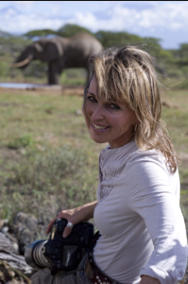
photographic activism and it looks to seep into the hearts of the viewer, stirring a long-lasting passion, rather than a short
sharp shock to the heart as a means to motivate action.
She is a child of Africa and that seems to make all the difference because deeply embedded in her work is a knowledge of her
subjects; she seems to understand the leopard through the highlights on the eyes and what it will do next, because she has
seen it thousands of times before. She feels the mist swirl around a male lion… and we as observers of the image she gives
us, can also feel the roar that is about to come from its mouth, because she has heard those roars daily for decades.
The authenticity of her work has been recognized by institutions like the American Academy of Achievement, and in The
World Ecology Award, let alone seven Emmy Awards, a Peabody and endless other notable film awards that they have
collected together. She is a co-founder of the Big Cats Initiative and sits on the board of WildAid in San Francisco, and
regionally on Great Plains Conservation boards in Kenya and Botswana. Their TED talk (2010) has also been seen by
thousands of people.
Her passion for wildlife is endless. Perhaps for Beverly, the most prestigious and valued accolade is the Presidential Order of
Merit given to her by the president of Botswana His Excellency Ian Khama, for work done for the enhancement of the
reputation of Botswana via her images.
But Beverly’s eye for light and recognizing a unique moment in wildlife comes from quite simply doing the time in places she
loves, with someone she loves and with a healthy blend of outrage against what is happening to these wild places and the
precious animals she knows so well.
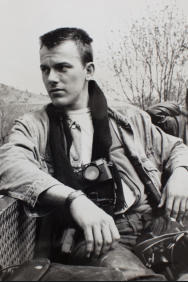
and stayed with have been welcoming and open. Even in the most dire situations, when almost everything seems negative, I
find myself photographing the positives. When I stayed with a family in the favelas of Rio de Janeiro I found that in spite of the
level of violence surrounding people living there, it was outweighed by the community's cohesion. They had, without any
external help, organised football and ballet classes for the children and adults, art clubs, after-school care and had built their
own library. Families supported each other and the community had a strong sense of social solidarity. This is what I wanted to
photograph, not the violence and danger. When I first started taking pictures I found that the social documentary style of B&W
suited my work brilliantly (things were more black & white to me then). However, as time has gone by, I have moved away
from the more traditional image to something I think is more fluid and spontaneous.”
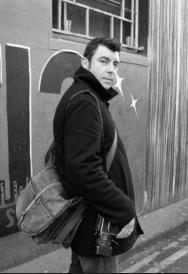
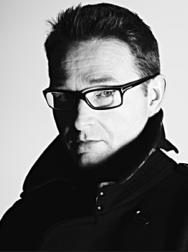
He lives with his wife and three children in Devon, England.
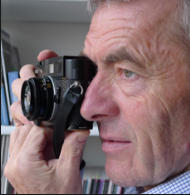
Awards, among others: Shortlist Fotofestival Schömberg 2013; shortlist Tbilisi Kolga-Festival 2012, Honorable mention at
Prix de la Photographie Paris 2007, Honorable Mention, Lucie-Award, Los Angeles 2007.
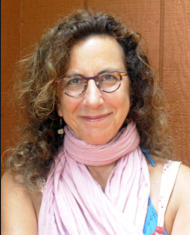
Associate Professor (Adjunct) at New York University, and teaches a variety of workshops both in United States and abroad.



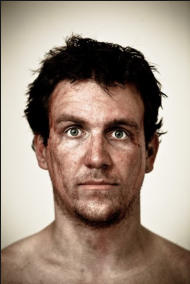
Christoph Rehage
To commission Marco or to request prints of his work: www.crehage.com
Christoph Rehage was born in 1981 in Hanover, Germany.
He likes to think of himself as half Hungarian, even though he is only able to understand
three words in his ancestral language: pálinka, pörkölt, and pálácsintá (liquor, stew, and
pancakes).
He did a high school exchange program in the United States, civil service in Frankfurt, and
a year in Paris, flipping burgers at McDonalds and guarding the Musée du Louvre. A
spontaneous walk home from France was a pleasant diversion before undertaking China
Studies in Munich.
After the intermediate exams, he did two more years of language studies and
cinematography in Beijing, then decided to walk home from there, too. This eventually led
to a weird beard, a bunch of blisters, and a minor sensation on the Internet called “The
Longest Way”.
Today, Christoph is back in Germany. He finally obtained his degree in China Studies and
somehow managed to publish two books about the walk, one being a travelogue with Piper/Malik and the other a coffee table
book with National Geographic.
He is now working as a columnist for a Chinese newspaper, hoping to get his next book
out there soon.

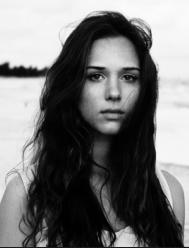

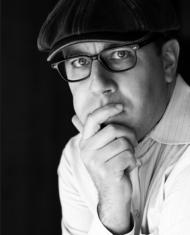
Thomas Leuthard
To commission Thomas or to request prints of his work: www.thomasleuthard.com
Thomas Leuthard is a street photographer from Switzerland who travels around the world
to witness and document life on the street. For him, travelling and shooting in the streets
is his only passion and he lives this dream to the fullest extent. “I love to explore new cities
on my own and try to capture what my eye sees. Often my view differs from certain
expectations which is good, since I don't want to show the cities as people already know
them. I always try to meet local photographers to share knowledge and to network.
Currently my output doesn't really let me do anything else than working for 60% and
shooting for 40%, but as long as the challenge remains this kind of lifestyle will continue.”

Ulrik Pedersen
To commission Ulrik or to request prints of his work: www.ulrikp.com
Ulrik Pedersen is, a freelance photographer from Denmark with almost 10 years of
experience working with UN, embassies and NGOs in Ethiopia, Kenya, Romania,
Philippines, South Sudan, Somalia and Afghanistan before becoming a freelance
photographer.
Latest projects includes mental health in Nepal, soccer culture in Qatar, Kish Island in Iran
and 10 years after the earthquake in Bam, Iran.
Andrew Esiebo
To commission Andrew or to request prints of his work: www.andrewesiebo.com
Andrew Esiebo started out in photography by chronicling the rapid development of urban Nigeria as well as the country's rich
culture and heritage. As his work began to gain international recognition, Andrew's started to explore new creative territory,
integrating multimedia practice with the investigation of themes such as sexuality, gender politics, football, popular culture
and migration.
In 2010, he was selected for the Road to twenty ten project to form an All-Africa Dream Team of 16 journalists /
Photographers to provide alternative stories from the World Cup in South Africa. His work has been exhibited at the Havana
and Sao Paulo biennials, the Guangzhou Triennial in Beijing, the Chobi Mela V Photo Festival in Bangladesh, the
Noorderlitch Photo Festival in The Netherlands, African Photography Encounters in Mali and the Lagos Photo Festival
among others. His works have been published in books, magazine and websites such as guardian.co.uk, Marie Claire Italia,
Time Out Nigeria, Mail & Guardian online, Laia Books, Geo-Lino, KIT and African style magazine Arise.
Andrew has completed a number of artistic residencies including a five-month stay in Paris under Cultures France's Visa
Pour Creation, a three-month residency at the Gasworks in London as part of the Africa Beyond programme and a three-
month residency at the Gyeonggi Creation Center in South Korea from December 2011. He is the initiator and co-organizer
of “My Eye, My World”, a participatory photography workshop for socially-excluded children
in Nigeria.






















